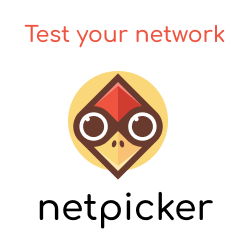OSPF Area’s Explained
Scroll DownIntroduction
In OSPF, a single autonomous system (AS) can be divided into smaller groups called areas. This reduces the number of link-state advertisements (LSAs) and other OSPF overhead traffic sent on the network, and it reduces the size of the topology database that each router must maintain. The routing devices that participate in OSPF routing perform one or more functions based on their location in the network,[1] as we will see within this article.
To understand areas we must first understand the types of OSPF routers and LSA types. Which are key to how and what defines the various area types.
Router Types
OSPF consists of 4 types of routers:
- Backbone Router - Has at least one interface in Area 0.
- Internal Router - Has all of its interfaces in a single area.
- Area Border Router (ABR) - An OSPF router that has one or more interfaces in the backbone area and one or more interfaces in a non-backbone area.
- Autonomous System Border Router (ASBR) - Connects to an area and also to an external AS.

Figure 1: OSPF router types.
LSA Types
OSPF routers advertise their routing topology across the OSPF domain via LSA's (Link State Advertisements). These LSA's are sent in the form of LSU's (Link State Updates) between adjacent neighbors (shown below).

Figure 2: OSPF LSU packet.
Within OSPF there are a number of LSA types. Below provides the main types:
| LSA Type | Generated By | Description |
|---|---|---|
| Type 1 - Router | Generated by each internal router within an area, per area link. | Flooded within a single area only. |
| Type 2 - Network | Generated by the DR. | Flooded within a single area only. |
| Type 3 - Network Summary | Generated by the ABR. | Describes inter-area routes. |
| Type 4 - ASBR Summary | Generated by the ABR. | Describes the path to the ASBR. |
| Type 5 - AS External | Generated by the ASBR. | Describes the redistributed routes that have been injected into the OSPF domain from an external AS by the ASBR. |
| Type 7 - NSSA External | Generated by the ASBR, within a Not-so-stubby area. | Describes external routes. Sent from ASBR to ABR and converted into a Type 5 by the ABR, which then floods to its areas. |
Areas Types
Now that we understand the router and LSA types we can dive into the various areas:
- Backbone area - The backbone area is the core of the OSPF network. Furthermore, OSPF states that every area must be connected to the backbone area (aka area 0).
- Standard areas - This is an area that is not "stub based". This includes the backbone area.
- Stub area - With stub areas external routes are not propagated into the stub area by the ABR but replaced with a default route instead. This reduces the OSPF topology along with LSA overhead.
- Totally stubby area - This area is the same as a stub area with the addition that they do not receive type 3 LSA's. The ABR injects a default route.
- Not-so-stubby area - Also known as NSSA, is an area similar to a stub area but with the addition of an ASBR.
Standard
First of all, we have the standard area. Standard areas are based on the following LSA's:
- Type 1 and Type 2 LSA's are flooded between routers sharing a common area.
- Type 3 LSAs are sent by the ABR to advertise inter-area routes.
- Type 4 LSAs are sent by the ABR advertising the path back to the ASBR.
- Type 5 LSAs are sent by the ASBR to advertise external routes.

Figure 3: Standard OSPF area.
Stub Area
Stub areas allow you to control the advertisement of external routes into an area. By designating an area border router (ABR) interface to the area as a stub interface, you suppress external route advertisements through the ABR.[2] This, in turn, reduces the CPU/memory used by the nodes to maintain the topology database.
With stub areas, the Type 5 LSA is not sent by the ABR. Instead, the Type 3 LSA includes a default route which it sends out to the stub area nodes.

Figure 4: Stub OSPF area.
Totally Stubby Areas
Totally stubby areas are similar to stub areas, in the fact that they do not receive type 4 or 5 LSAs from their ABRs. However, with Totally stubby areas the Type 3 (inter-area advertisement) is also removed, and a single default route is injected by the ABR.

Figure 5: Totally stubby OSPF area.
Not-so-stubby Areas
An NSSA (Not-so-stubby area) is simply a stub based area that includes an ASBR.
Therefore Type 3 (inter-area) LSAs will still be sent by the ABR.
However, as the rule of stub areas is that the LSA Type 5 is not sent, the ASBR sends an LSA Type 7 announcing its external routes to the ABR. This LSA Type 7 is then converted into a Type 5 by the ABR.

Figure 6: NSSA OSPF area.
NSSA's can function as either stub (shown above), or totally stubby area's. With Not-so-totally stubby area's Type 3 LSA's are also suppressed.
Reference
"Understanding OSPF Areas - TechLibrary - Juniper Networks." https://www.juniper.net/documentation/en_US/junos/topics/concept/ospf-routing-understanding-ospf-areas-overview.html. Accessed 14 Nov. 2018. ↩︎
"Understanding OSPF Stub Areas, Totally Stubby ... - Juniper Networks." https://www.juniper.net/documentation/en_US/junos/topics/concept/ospf-stub-areas-overview.html. Accessed 14 Nov. 2018. ↩︎


